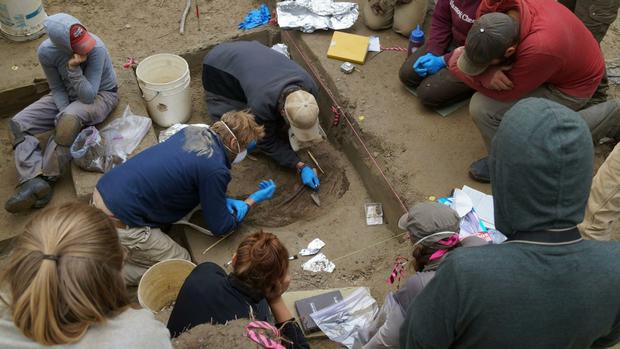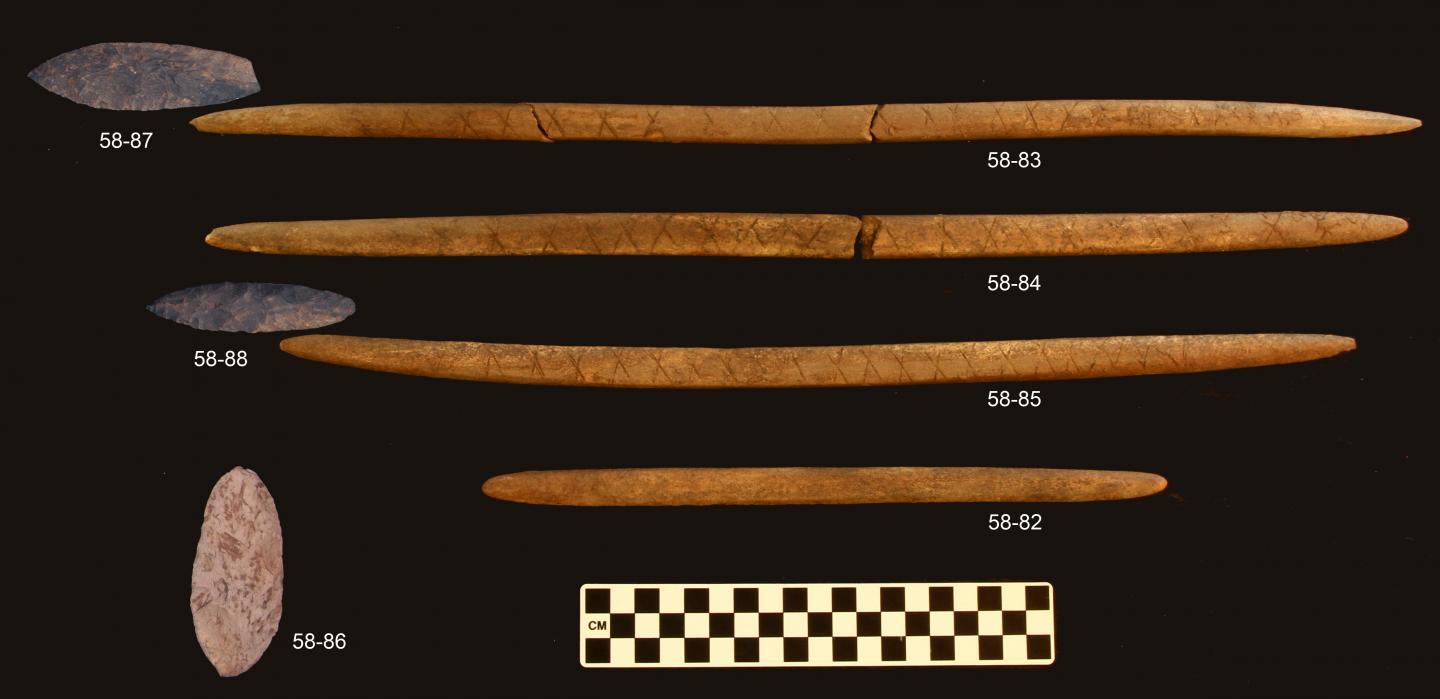The remains of two Ice Age infants are the youngest human remains ever found in northern North America, according to a new paper.
The remains of the infants date to around 11,000 years ago and were found in 2013 at an excavation of the Upward Sun River site, near the Tanana River in central Alaska.
Ben Potter of the University of Alaska Fairbanks, the paper's lead author, and colleagues say that the human remains and associated burial offerings, as well as inferences about the time of year the children died and were buried, could lead to new thinking about how early societies were structured and the stresses they faced as they tried to survive, along with how they treated the youngest members of their society and how they viewed death and the importance of rituals associated with it.
 University of Alaska Fairbanks professors Ben Potter and Josh Reuther excavate the burial pit at the Upward Sun River site. Credit: UAF photo courtesy of Ben Potter
University of Alaska Fairbanks professors Ben Potter and Josh Reuther excavate the burial pit at the Upward Sun River site. Credit: UAF photo courtesy of Ben Potter
The new find in 2013 was made at the site of a 2010 excavation, where the cremated remains of another 3-year-old child were found. The bones of the two infants were found in a pit directly below a residential hearth where the 2010 remains were found.
"Taken collectively, these burials and cremation reflect complex behaviors related to death among the early inhabitants of North America," Potter said.
In the paper, Potter and his colleagues describe unearthing the remains of the two children in a burial pit under a residential structure about 15 inches below the level of the 2010 find. The radiocarbon dates of the newly discovered remains are identical to those of the previous find--about 11,500 years ago--indicating a short period of time between the burial and cremation, perhaps a single season.
Also found within the burials were unprecedented grave offerings. They included shaped stone points and associated antler foreshafts decorated with abstract incised lines, representing some of the oldest examples of hafted compound weapons in North America.
"The presence of hafted points may reflect the importance of hunting implements in the burial ceremony and with the population as whole," the paper notes.
The researchers also examined dental and skeletal remains to determine the probable age and sex of the infants at the time of the death: One survived birth by a few weeks, while the other died in utero. The presence of three deaths within a single highly mobile foraging group may indicate resource stress, such as food shortages, among these early Americans.
Such finds are valuable to science because, except in special circumstances like those described in the paper, there is little direct evidence about social organization and mortuary practices of such early human cultures, which had no written languages.
The artifacts--including the projectile points, plant and animal remains--may also help to build a more complete picture of early human societies and how they were structured and survived climate changes at the end of the last great Ice Age. The presence of two burial events--the buried infants and cremated child--within the same dwelling could also indicate relatively longer-term residential occupation of the site than previously expected.

Stone projectile points and associated decorated antler foreshafts from the burial pit at the Upward Sun River site. Credit: UAF photo courtesy of Ben Potter
The remains of salmon-like fish and ground squirrels in the burial pit indicate that the site was likely occupied by hunter-gatherers between June and August.
"The deaths occurred during the summer, a time period when regional resource abundance and diversity was high and nutritional stress should be low, suggesting higher levels of mortality than may be expected give our current understanding" of survival strategies of the period, the authors write.




Comments